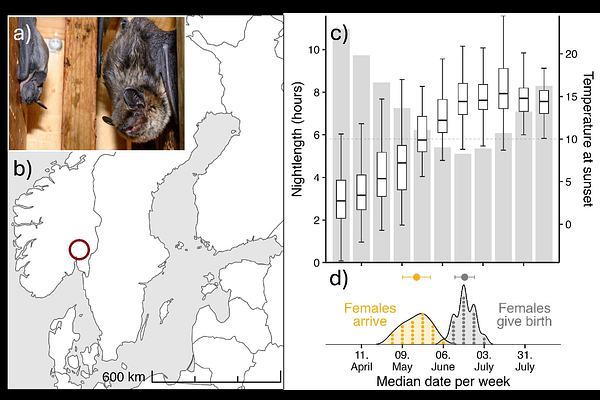Behavioural changes in female northern bats (Eptesicus nilssonii) across gestation and lactation.

Behavioural changes in female northern bats (Eptesicus nilssonii) across gestation and lactation.
Lilley, T.; Fjelldal, M. A.; van der Kooij, J.
AbstractUnpredictable environmental conditions affecting prey availability and short summer nights reducing foraging time present nocturnal insectivorous mammals with an energetic dilemma at northerly latitudes during gestation and lactation. This is pronounced for aerial hawking bat species, for which prey activity is highly dependent on ambient temperature. Here, we describe changes in activity of female Eptesicus nilssonii, the northernmost breeding bat species, during gestation and lactation over several years at a roost site in southern Norway. Roost exits and returns were recorded using an infrared barrier at the entrance, and parturition dates were registered via a camera set inside the roost. Our results indicate significant temporal changes in body mass and behaviour throughout the breeding season. Lactating bats both setting out to forage earlier than during gestation and returning later. This behaviour is dependent on ambient temperature, with bats extending foraging time at elevated temperatures. These behaviours may occur as a response to the increased energetic needs of lactation, and the effect of increased temperature to reflect increased food availability which allows females to avoid increased predation pressure as a consequence of advanced roost exit or delayed return. The mass of females also decreases during lactation, suggesting high energetic demands during this period. Our study reveals insights into underlying mechanisms in high latitude insectivorous bats that can assist in coping with a short season with fluctuating resources.